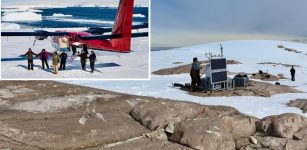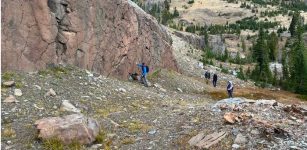Earthquake 2,500 Years Ago Changed Course Of Ganges River: Could It Happen Again?
Eddie Gonzales Jr. – MessageToEagle.com – A major earthquake 2,500 years ago abruptly changed the course of one of the largest rivers on Earth, according to a new study. The previously undocumented quake rerouted the main channel of the Ganges River in what is now densely populated Bangladesh, which remains vulnerable to big quakes.
The lowlands of Bangladesh are in many places an elaborate mixture of land and water that sometimes change places. Credit: Steve Goodbred
Scientists have documented many river-course changes, called avulsions, including some in response to earthquakes. However, “I don’t think we have ever seen such a big one anywhere,” said study co-author Michael Steckler, a geophysicist at Lamont-Doherty Earth Observatory, which is part of the Columbia Climate School. It could have easily inundated anyone and anything in the wrong place at the wrong time, he said.
Lead author Liz Chamberlain, an assistant professor at the Netherlands’ Wageningen University, said, “It was not previously confirmed that earthquakes could drive avulsion in deltas, especially for an immense river like the Ganges.”
The Ganges rises in the Himalayas and flows for some 1,600 miles, eventually combining with other major rivers including the Brahmaputra and the Meghna to form a labyrinth of waterways that empty into a wide stretch of the Bay of Bengal spanning Bangladesh and India. Together, they form the world’s second-largest river system as measured by discharge. (The Amazon is first.)
Like other rivers that run through major deltas, the Ganges periodically undergoes minor or major course changes without any help from earthquakes. Sediments washed from upstream settle and build up in the channel, until eventually the river bed grows subtly higher than the surrounding flood plain.
At some point, the water breaks through and begins constructing a new path for itself. But this does not generally happen all at once—it may take successive floods over years or decades. An earthquake-related avulsion, on the other hand, can occur more or less instantaneously, said Steckler.
In satellite imagery, the authors of the new study spotted what they say was probably the former main channel of the river, some 100 kilometers south of the Bangladeshi capital of Dhaka. This is a low-lying area about 1.5 kilometers wide that can be found intermittently for some 100 kilometers more or less parallel to the current river course. Filled with mud, it frequently floods, and is used mainly for rice cultivation.
Chamberlain and other researchers were exploring this area in 2018 when they came across a freshly dug excavation for a pond that had not yet been filled with water.
On one flank, they spotted distinct vertical dikes of light-colored sand cutting up through horizontal layers of mud. This is a well-known feature created by earthquakes: In such watery areas, sustained shaking can pressurize buried layers of sand and inject them upward through overlying mud. The result: literal sand volcanoes, which can erupt at the surface. Called seismites, here, they were 30 or 40 centimeters wide, cutting up through 3 or 4 meters of mud.
Further investigation showed the seismites were oriented in a systematic pattern, suggesting they were all created at the same time. Chemical analyses of sand grains and particles of mud showed that the eruptions and the abandonment and infilling of the channel both took place about 2,500 years ago.
Furthermore, there was a similar site some 85 kilometers downstream in the old channel that had filled in with mud at the same time. The authors’ conclusion: This was a big, sudden avulsion triggered by an earthquake, estimated to be magnitude 7 or 8.
The study was just published in the journal Nature Communications.
Written by Eddie Gonzales Jr. – MessageToEagle.com Staff Writer










